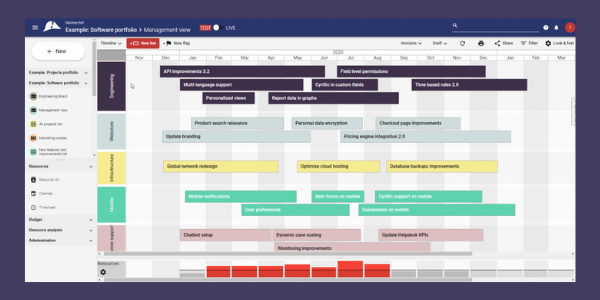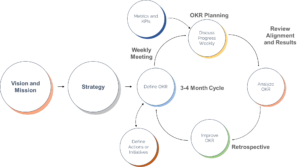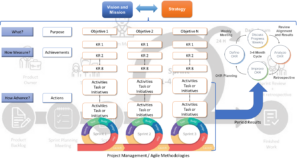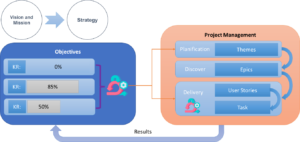User adaptation is one of the major hurdles faced by the digital workplace today. As the work and the workplace continue to adopt and adapt new technologies available, employee usability lags. Sure, some organizations adapt faster than others, but for the long haul, digital dexterity helps organizations to acclimatize faster amid disruption and digital transformation.
According to Gartner, employees with a high level of digital dexterity are 3.3 times more likely to use digital initiatives to improve how they work. Coined by Gartner, digital dexterity is a terminology that goes beyond specific hard skills and technical abilities. To succeed and keep up with the world that’s going digital, inculcating digital dexterity should be a priority for every organization.
What is Digital Dexterity?
According to Gartner, “Digital dexterity is the ability and desire to exploit existing and emerging technologies for better business outcomes.” It is all about fostering a culture conducive to drive a successful digital transformation. Simply put, it is the willingness to engage, adapt, and learn to use new technology and include it in the way of work so that it fits the mission of the organization.
Advertisement
[widget id=”custom_html-68″]
CIO’s role in digital dexterity:
The onus is on the Chief Information Officer to create a digitally dexterous company. The CIO is responsible for supporting and encouraging desired behavior prerequisites to change management. However, transforming an entire organization from one that resists, or at the very least accepts new technology, can be very challenging. CIOs have an arduous road ahead, but not one that is impossible to conquer. Following these steps, CIO’s can mold digital dexterity into the workforce.
1) Begin with figuring out what failed to work in the past and how it can be corrected. Use surveys and focus groups to identify factors that trigger an aversion to change in employees.
2) Create a benchmark that evaluates employees’ outlook toward new technology at the workplace. This data will help you identify the areas that need a higher focus, like a particular department or a process.
3) Envision the future of your workplace and share it with your employees. Doing so will enhance the willingness of your workforce to accept new technology as a stepping stone to a digitally transformed future
4) Train users on the new technology extensively, and explain the benefits of increased collaboration, efficient data collection, and improve business efficiency. So that they are less resistant to adopt the change.
Prerequisites to digital dexterity:
1) Digital-First Mindset: The first and foremost step to create a digitally dexterous culture is seeking, exploring, and prioritizing digital solutions. In short, a digital mindset should be in place.
A digital mindset is an outlook that tends to reach out to technology to have a competitive advantage, and systematically approach enterprise data. When managers and employees instinctively resort to digital tools and data to improvise processes or create new products, they reap the benefits of agility and enhanced collaboration more often. To create a digital mindset, CIO’s must ensure these 3 steps:
i) To engage key stakeholders, communicating the benefits and importance of digital transformation is crucial.
ii) Practice what you preach. When executive management is engaged, employees are automatically engaged.
iii) Align rewards to digital transformation be it tangible or intangible will drive employee motivation and transformation goals.
2) Digitized Practices: The key practices that boost digital dexterity are digitizing operations, data-driven decisions, and encouraging collaborative ways of working and learning. Digital organizations display more advanced data capability levels than their peers. In a study, it came to light that less than 18% of organizations displayed digital dexterity. This also explains why 70% of digital transformations fall through the cracks. The following steps can ensure digitized practices at your workplace:
i) Start by hitting refresh on your current operational practices and restart practices by implementing digital solutions at the vanguard. This encourages collating and analyzing data systematically to drive better decision-making.
ii) Focusing on adoption instead of deployment of digitized practices leads to increased collaboration among actively engaged users, intelligent decision-making, and, over time, incessant behavioral change. Role model, rewards, gamification, etc, can have a significant impact on employee behaviors.
iii) Ensuring new work practices are set to default and accordingly, adapting the management, people, and processes to institutionalize the updated process. Doing this CIOs advocate transparency, core process standardization, and operations efficiency that digital technologies provide.
3) Empowered Talent: To create a culture conducive to digital dexterity, leveraging the digital IQ of the organization, developing key skills, and increasing engagement is important. In a McKinsey Global Institute survey, it was predicted that by 2030, nearly one-fourth workforce shall be retrained or replaced by AI and automation. Intel provided a Digital IQ training program for all employees to increase collaboration, communication, and innovation. In just a matter of two years, more than 20,000 employees completed the training. When this level of commitment to learning exists, it helps organizations retain their key talent and build an appreciation for digital initiatives.
4) Data Access & Collaboration Tools: Once talent, competence, and engagement are established, data access and collaboration tools can complement performance-related outcomes to drive innovation and share intelligence across the enterprise.
Data access is pivotal to digital transformation. Precise and timely data not only aids in improving business operations but also helps in proactively catering to customer demands. When employees realize the importance of data-driven outcomes, they continue to deploy data-driven approaches consistently.
Also, access to effective collaboration and coordination tools facilitates the key practices of employee engagement.
Advantages of digital dexterity:
1) More flexibility: Digitally dexterous employees are more willing to try new roles and don new hats to support the company’s adaptation to a digital workplace.
2) Higher autonomy: Employees are more willing to work on projects with initiatives and requirements that are susceptible to change or are unclear. They are also able to harness AI and other disruptive technologies at the right time.
3) Enhanced efficiency: As digital opportunities surface, employees can take advantage of and adapt themselves to improve their team or department’s efficiency.
4) Remote workability: The remote workforce is adept to work from anywhere as long as the right technologies are deployed. Collaborating with diverse perspectives and experience in remote work encourages digital dexterity.
5) Willing to take risks: Employees with high digital dexterity understand the positive impact of digitalization on the enterprise-wide level and are thus willing to take risks to pursue this result.
Takeaway: Creating a culture that fosters digital dexterity is a daunting task, especially for firms where employees are averse to trying new technologies. But with the right mindset, practices, talent, and tools, organizations can successfully establish digital dexterity. This is possible with a human-centric approach that will navigate the digital transformation. To facilitate this, businesses must ensure that their digital initiatives include training to existing and new employees on board. Also, CIO’s and senior management need to communicate long-term strategies and take accountability to ensure digital initiatives from start to finish.








